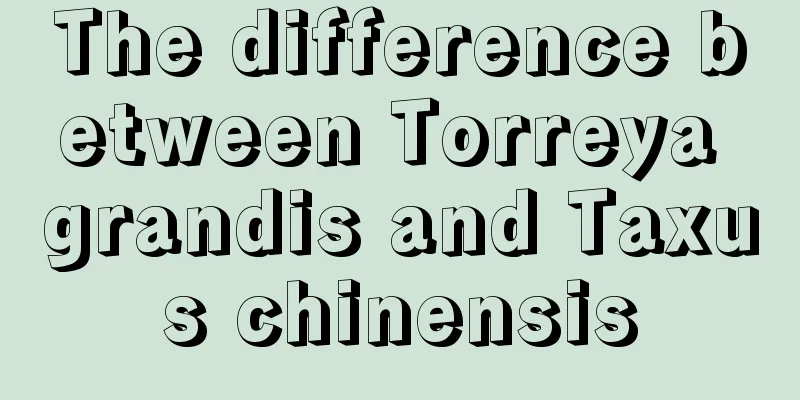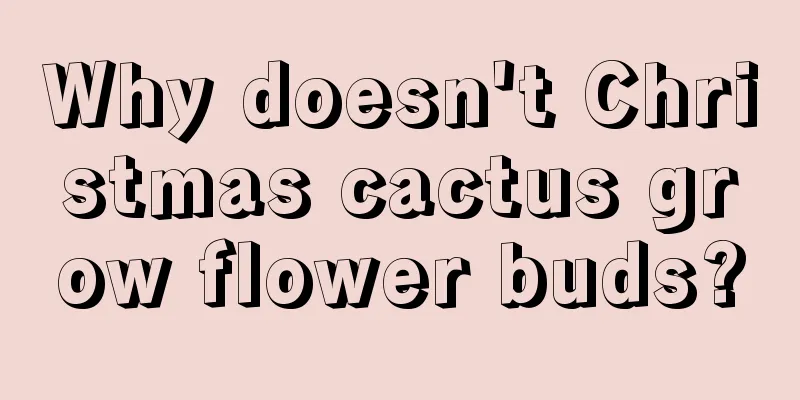What fertilizer should be used to make peaches big and sweet?

|
Peaches are a kind of fruit that many friends love to eat. Whether peaches can be sold at a good price is not only related to appearance, but the taste of peaches is also very important. Let’s take a look at what fertilizers can be used to make peaches big and sweet? What fertilizer should be used to make peaches big and sweet? Peach trees have high requirements for the three main fertilizers: nitrogen, phosphorus and potassium. Since peach trees have a well-developed root system, trenching should be used when fertilizing to promote the root system's absorption of nutrients. Peach trees have different fertilizer requirements at different growth stages. During the young tree stage, the amount of nitrogen fertilizer should be appropriately controlled, while the addition of phosphorus and potassium fertilizers should be increased to prevent excessive growth of the tree and affect the quality of the fruit. Peach trees have a high demand for potassium fertilizer throughout their entire growth cycle , especially during the fruit expansion period. At this time, timely supplementation of potassium fertilizer is crucial to promote fruit development. Top dressing is usually done 3 to 4 times for peach trees, which are arranged before flowering, after flowering, during the hard core period and during the fruit expansion period. The topdressing of peach trees is mainly foliar fertilization, combined with basal fertilizer application. When applying fertilizer on the leaves, you can use Colorist, dilute it with water at a ratio of 1:2000 to 1:3000, mix it with potassium dihydrogen phosphate, and supplement it with trace elements such as calcium, boron, and zinc. This method of fertilization helps promote fruit coloring, increase the sugar content of the fruit, and prevent flowers and fruits from falling, thereby increasing production and income. Fertilizer requirements of peach trees at different growth stages 1. Young tree stage At this stage, peach trees mainly need to promote root development and establish a good tree structure. Therefore, the amount of nitrogen fertilizer used should be properly controlled to avoid excessive growth. Phosphorus fertilizers help root development, while potash fertilizers help increase the tree's disease resistance and promote root health. 2. Growth period As peach trees enter the growing season, the need for nitrogen fertilizer increases to support the growth of new shoots and the formation of leaves. At the same time, phosphorus fertilizer helps flower bud differentiation, while potassium fertilizer helps improve the overall health and disease resistance of the tree. 3. Flowering period Before flowering, peach trees have an increased demand for phosphorus fertilizer to promote the opening of flowers and improve pollination success. In the later stage of flowering, appropriate amount of nitrogen fertilizer can help restore the vitality of the tree. 4. Hardcore stage The hard-core stage is a critical period when the fruit begins to form, and the demand for potassium fertilizer increases at this time because potassium fertilizer helps the formation of cell walls and the hardening of the fruit. 5. Fruit expansion period This is the period when peach trees have the greatest demand for potassium fertilizer, which is essential for promoting rapid expansion of the fruit and improving fruit quality. 6. Maturity During the fruit ripening period, the need for nitrogen fertilizer is reduced, while the application of potassium and phosphorus fertilizers can continue to support the final ripening of the fruit and improve fruit quality. 7. Dormant period During the dormant period, the growth activity of the peach tree slows down and the amount of fertilizer used is reduced accordingly. However, an appropriate amount of basal fertilizer (such as organic fertilizer ) can be applied during the dormant period to prepare for the next year's growth cycle. 8. Foliar fertilization In addition to soil fertilization, foliar fertilization is also an effective way to supplement nutrients, especially during fruit development, when the required trace elements and nutrients can be quickly supplemented through foliar fertilization. In summary, the key to improving the quality of peaches lies in strengthening the comprehensive nutritional management of peach trees. Ensuring that peach trees receive a balanced supply of nutrients is the basis for ensuring peach yield and quality.
|
<<: What fertilizer makes cabbage grow best?
>>: What is the best fertilizer for grapefruit trees?
Recommend
What is the symbolic meaning of bamboo?
Representative of backbone In ancient times, peop...
Can potted orchids be exposed to rain? Can orchids grown outdoors be exposed to rain?
Potted orchids, like natural orchids, can be expo...
How to water asparagus fern and how often to water it
1. Watering method When caring for asparagus fern...
How to breed golden marbles
Seed propagation Generally in March and April, pi...
She picked up the flowers you threw away and brought them home, and they bloomed in a few months.
Saving Cyclamen It is true that cyclamen likes wa...
The main value of dragon blood tree
The main value of dragon blood tree: high ornamen...
Rose varieties, how to grow roses
1. Rose Varieties There are many varieties of ros...
Can potted aloe vera be used on the face?
1. Can wipe your face The potted plants can be us...
Can spinach continue to grow if the stems and leaves are cut and the roots are left?
Spinach is a very resilient vegetable that has th...
These 7 kinds of flowers are almost indestructible. The green ivy is only ranked second. The first one is...
Bachelor Tree Recommended reasons: Drought + sun ...
Can rootless succulents be planted directly?
1. Is it possible? Whether rootless succulents ca...
Cultivation Techniques of Azalea Bonsai
How to make azalea bonsai Rhododendron can be pro...
How to propagate creeping grass and what to pay attention to
How to propagate the creeping grass There are thr...
Plant these 6 types of climbing flowers and you’ll have a flower wall!
Bougainvillea Daily maintenance: 1. Bougainvillea...
How to cultivate wild chrysanthemum
1. Soil It is best to choose permeable and fertil...









